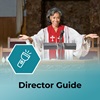Jesus involved his disciples in a special style of learning experiences. And as rock-solid teachers, we have the privilege of following the Master Teacher's model. Consider the three different aspects of learning situations: awareness, truth, and experience.
- Awareness. Awareness is when the student's motivation has been developed. The student hungers for the content of the lesson. Teaching for awareness occurs when you build the need for knowledge in a student's life. Bruce Wilkinson states that when you build the need, you provide the main method of motivation in a student's life. This is our primary calling, because it brings the student's real need to the surface before we teach him or her the "content."
- Truth. Truth is often the first aspect that comes to mind when we think of a biblically based learning situation. Truth means relating the story of God's relationship to people through his Word and communicating statements of doctrine that give life to learners. I call this the "true truth" that people naturally search for—"true truth" because "truth" is sometimes put in quotation marks in the postmodern world. By truth, we mean the rock-solid basis of teaching: "Your word is truth" (John 17:17).
- Experience. Not all events are experience.! Two words from the New Testament are translated "know." One, oida, often means "to know as certainty;"; the other, ginosko, means "to know in one's life." We'd use the word experience to describe the latter. This kind of knowledge comes from the street. It represents truth in shoe leather—learning from the school of reality. Teaching with experiences means helping students discern and interpret experience according to the standards of God's Word.
How Did Jesus Teach?
So what did Jesus do when he taught his disciples and other followers? Which type of learning did he use first? What order did he use when he approached learning experiences?
- Truth, Experience, Awareness. A few times, Jesus began his teaching with truth, followed by experience and awareness. For example, his teaching on the Resurrection followed this pattern: "He then began to teach them that the Son of Man must suffer many things and be rejected by the elders, chief priests, and teachers of the law, and that he must be killed and after three days rise again" (Mark 8:31).
The apostle John provides this commentary about how Jesus' disciples later remembered what Jesus had taught: "Jesus answered them, 'Destroy this temple, and I will raise it again in three days.' The Jews replied, 'It has taken forty-six years to build this temple, and you are going to raise it in three days?' But the temple he had spoken of was his body. After he was raised from the dead, his disciples recalled what he had said. Then they believed the Scripture and the words that Jesus had spoken (John 2:19–22)."
After Jesus' disciples experienced his death and resurrection, they had an awareness of what he'd taught. - Truth, Awareness, Experience. More often, Jesus began with truth and then followed it with awareness and experience. Jesus used this approach in the Sermon on the Mount, for example. The truths that he gave us still echo in the spiritual life of believers. First, Jesus spoke the truth about the Father's provision: "Do not worry about your life, what you will eat or drink; or about your body, what you will wear. Is not life more important than food, and the body more important than clothes?" (Matthew 6:25).
Jesus then helped the disciples become aware of the truth with illustrations of birds and flowers: "Look at the birds of the air; they do not sow or reap or store away in barns, and yet your heavenly Father feeds them … . See how the lilies of the field grow. They do not labor or spin" (Matthew 6:26, 28).
Finally, Jesus commanded the disciples to trust in God's provision: "Seek first his kingdom and his righteousness, and all these things will be given to you as well" (Matthew 6:33)—an exhortation for his followers to experience life change. - Experience, Awareness, Truth. Jesus most often taught by starting with experience and following it with awareness and truth. When Jesus taught the disciples to pray—what most of us grew up calling "The Lord's Prayer"—he followed this pattern (see Luke 11:1–4). He also used this pattern when he rebuked the disciples on the Sea of Galilee in order to stretch their faith (see Luke 8:25). And Jesus used this pattern when he fed the 5,000 as recorded in John 6:1–15. The people ate (experience), they asked (awareness), and they believed (truth).
Perhaps the strongest example of this pattern occurs in John 13, where Jesus washed the disciples' feet (experience), had a discussion with Peter regarding the bathing of his whole body (awareness), and set an example of being a servant (truth). Jesus had an incredible ability to take any experience and turn it into a learning situation. The technique of "guided conversation" follows the experience-awareness-truth pattern, as does the interactive learning model of teaching.
How Did Jesus Use Learning Activities?
As we use learning activities with our students, we cause our students to learn. What's so important about using learning activities? Jesus used learning activities for at least five purposes: motivational activities, orientation activities, information activities, application activities, and evaluation activities.
- Motivational Activities. The basic premise is this: Involvement motivates. Using motivational activities means knowing our students' needs, characteristics, desires, and knowledge—and developing experiences and activities that move them toward learning.
- Orientation Activities. When Jesus told the disciples to "put out into deep water, and let down the nets for a catch" (Luke 5:4), he was introducing an orientation learning activity. He used the activity to give them perspective about the starting point of being a disciple ("don't be afraid, from now on"), about where disciples should go ("you will catch men"), and the possible path to get there. Apparently, the disciples understood the lesson, because "they pulled their boats up on shore, left everything and followed him."
- Information Activities. Jesus used learning activities to teach people basic information. For example, Jesus used the illustration of the coin to teach about paying taxes (see Luke 20:24–25), the transfiguration to teach about his deity (Matthew 17:1–9), the example of the child to teach about true greatness (Luke 9:46–48), and the healing of the man with the withered hand to teach about the forgiveness of sin (Mark 3:1–5).
Teachers can teach information by using creative-writing pieces (letter writing, poetry diaries, and so forth), field trips, puppets, role-playing, interviews, case studies, or art. You don't have to feel stuck in a rut. In fact, creative and interactive learning methods might teach students even more than traditional methods. - Application Activities. The intent of an application activity is to help students recall a principle and use it in a situation. Jesus used application learning activities when he went to Lazarus's tomb (see John 11:17–44), when he told the disciples to cast the net on the other side of the boat (John 21:6), and when he fed the 5,000 (Luke 9:10–17).
Veteran children's ministry leader Barbara Bolton states, "Changed lives occur as a work of the Holy Spirit when the learner is actively involved in the process of applying Scripture to life experiences."
Children should be given the opportunity to practice what they learn so they can remember it when they go home. Teenagers might "present the gospel" in class so they're ready to share at school. Adults who practice a personal quiet time in a small group will know how to do it on their own at home. And our families provide an ideal place to practice what we preach in many areas, including media selection, learning to give encouragement, and engaging in positive conversation. - Evaluation Activities. Jesus used evaluation activities to help learners gauge where they were in their own faith, such as when the sinful woman anointed his feet with expensive perfume (see Luke 7:36–50). Jesus used such activities to help people understand servant leadership and forgiveness of sins, and to help them recognize his deity.
Summary and evaluation activities are essential for our learners. As an example, children might draw pictures of how to be helpful at home. Teenagers can role-play the extension of forgiveness to a friend. Adults might plan a presentation about how Jesus is God.
Excerpted from Rock-Solid Teacher.
Copyright © 2006 by Greg Carlson. Published by Regal Books, http://www.regalbooks.com. Used by permission. All rights reserved.









